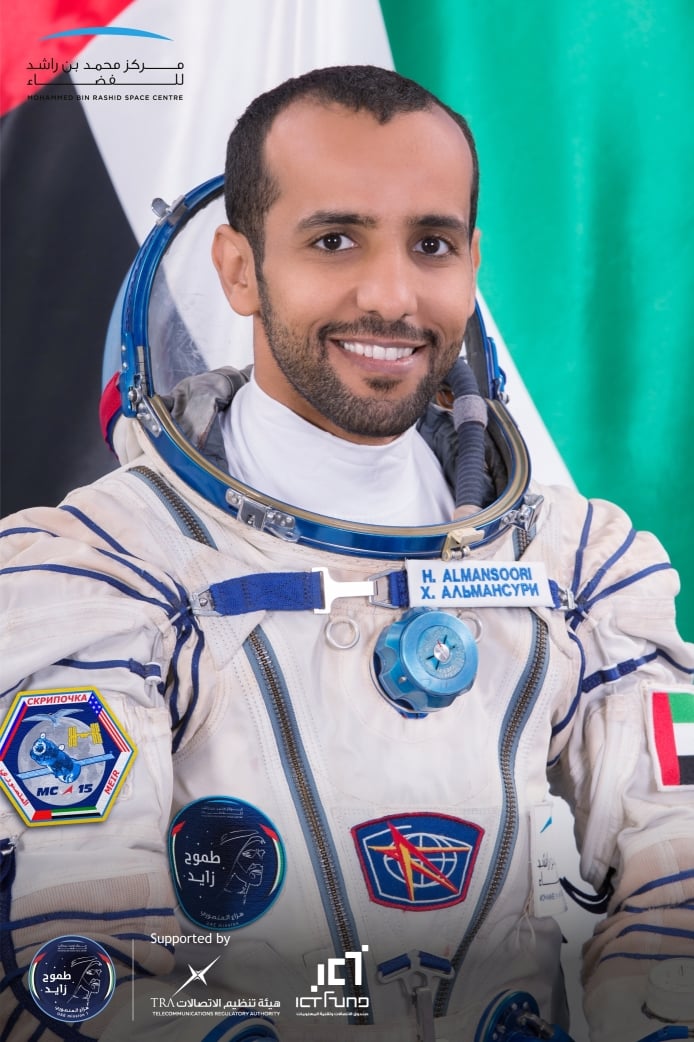In September this year, Emirati astronaut Hazzaa AlMansoori travelled to undertake a short mission on the International Space Station, 400 kilometres above Earth. The mission made AlMansoori the first Emirati in space, the first Arab to visit the ISS, and an overnight celebrity. The Middle East Exchange Team takes a look at the motivations behind his journey.
On the 25th September 2019, the Emirati astronaut Hazzaa AlMansoori travelled to join the International Space Station in orbit, 400 Km above Earth. On his journey into space, he reached speeds of something like 20 times the speed of sound as the 160-tonne Soyuz rocket escaped Earth’s gravitational pull. On his return, today, he will fly at a speed of 7,660 metres per second.
He’s certainly taken the fast track.
AlMansoori was the first Arab to travel to the ISS; the first Emirati in space. Of the many tasks he was given to accomplish in his scheduled eight-day mission, one was to take viewers on earth on a tour of the ISS in the Arabic language. This was the first chance many, many people across the Arab world had to gain a closer view of the ISS and see how it works. It has given inspiration to young Arabs around the globe. AlMansoori's mission is part of a broad sweep of investments and initiatives that have taken the United Arab Emirates into the space age. Engineers at the Mohammed bin Rashid Space Centre have not only designed, constructed, launched and operated satellites that stand as the most technologically advanced in their class, but are now working on sending a probe to Mars, which will launch in the summer of 2020 and arrive in Mars orbit in early 2021. That probe was named ‘Mars Hope’ as a symbol of hope for all Arabs.

The UAE Space Agency is driving awareness of, and investment in, space sciences and engineering and Masdar Institute for Science and Technology, home to the Yahsat Space Laboratory now offers a Bachelor of Science in Aerospace Engineering. Students at the American University of Sharjah incorporation with Mohammed Bin Rashid Space Centre (MBRSC) have constructed and launched a functional CubeSat, Nayif-1.
The UAE is investing massively in space sciences. Why? Because the UAE government believe this dynamic, vibrant sector will provide jobs and opportunities for young people – that space will be the ‘Jebel Ali of the future’, an important and critical element in the future development of humanity. The UAE wants to lead the way forwards in space sciences, advanced research and engineering, building a centre of excellence and expertise that will foster investment, innovation, start-ups and new ventures. The UAE already sits at the centre of an increasing number of international co-operation efforts in space, including its role as a founder of the global PanGeo Alliance of satellite operators. As a young, but fast-growing, member of the international space community, the UAE aims to build and develop real-world opportunities for its young people in this important industry.
Every penny the UAE invests in space is an investment in the future of that nation’s youth, but also in building a space industry that will attract bright young minds from across the Arab world. Where once Arabs looked to the night sky to name the stars – 60% of the stars in our night sky today retain their Arabic names – now they are aiming to explore them.
